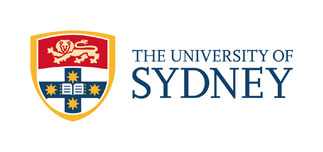 |
 |
The core material of this course consists of many beautiful, general results concerning spaces that arise naturally in analysis. An example of such a space is the set of all polynomials on the interval [a,b]. This space can be imbued with the structure of a normed vector space, which in turn gives it a metric structure and hence a topology. The main objects we will study are normed spaces, together with linear functionals and operators on them. For example, differentiation is an operator that takes a non-constant polynomial to a polynomial of lower degree (and a constant polynomial to the zero polynomial); and the definite integral of a polynomial over the interval is a linear functional that takes a polynomial to a real number.
The main methods and ideas used in this course come from geometry, linear algebra and topology. I'll summarise some of the highlights.
The set of all linear functionals or operators on a normed space can be turned into a normed space in a natural way. One of the first key results encountered in this course is the Hahn-Banach theorem, which allows you to extend a linear functional from a subspace to the whole space without increasing its norm. Another group of fundamental and useful results in functional analysis is centered around the Baire Category theorem, which is a result about decompositions of complete metric spaces. We will encounter different versions of the Baire Category theorem and deduce many consequences for normed spaces, such as the Banach-Steinhaus theorem, the open-mapping theorem, the closed-graph theorem, the principle of uniform boundedness, the inverse mapping theorem and the principle of condensation of singularities.
Whilst the above group of results is based on a result about metric spaces, we will next use topology. When we study a sequence in a normed space, we can use the norm (or, equivalently, its induced topology) to determine whether the sequence converges or not. For many applications, it turns out that not enough sequences converge. In other words, the topology induced by the norm is too strong. We will define the notion of a weak topology in order to get more useful convergence behaviour. An example of a weak topology is the product topology on a product of topological spaces, which has the natural property that a sequence in the product is convergent if and only if each coordinate converges. For the dual space of a normed space, we will define a similarly natural topology, called the weak-star topology. A result for topological spaces, Tychonov's theorem, will be used to deduce Alaoglu's theorem: The unit ball of the dual space of a normed space is compact in the weak-star topology.
The official course outline reads as follows:
Metric spaces revisited. Hilbert spaces: orthogonality; projections; Riesz representation theorem.
Banach spaces: linear operators & functionals; uniform boundedness principle; Hahn-Banach, closed graph & open mapping theorems.
Dual spaces, weak & strong convergence; adjoints. Complete continuity. Fredholm Alternative.
The prerequisite for this course is MATH3402, and I will assume knowledge of the concepts and methods introduced there and in its prerequisites. The present course includes revision of some key concepts and notions. In fact, the first line of the above course outline consists of topics from MATH3402. This material (as well as other foundational material and key examples) will be covered in student presentations.
Functional Analysis on Eric Weisstein's World of Mathematics
There is no required text for this course, and notes taken in class (lectures and presentations) should be sufficient. For my lectures, I will mostly follow the books by Bollobas and Folland listed under references below. All references will be placed on reserve in the Dorothy Hill Physical Sciences & Engineering Library in Hawken (50).
Each assignment will be given out during the lecture two weeks before its due date, and become available on this web-page after that lecture. Late assignments will receive no marks and only be marked for feedback. Students who are unable to submit an assignment and qualify for special consideration should contact me.
Each assignment is worth 10% of the final mark.
Each student is expected to give at least one presentation during the semester. A presentation could be a summary of background material, a detailed example or a particularly pleasant proof. Students can pick available topics on a first-come first-served basis from the list of topics. The presentation is judged on clarity, exposition, understanding of contents and handling of questions. The materials needed to prepare the presentations will be provided, and I'm available for consultation to help clarify any questions or problems that may arise in their preparation.
The final exam is worth 50% of the final mark and covers material from the entire course.
Problems are given during lectures and will be summarised in problem sets, which also contain some extra questions. The problem sets will be given out during lectures and posted here.
The reference literature will be on reserve in the Dorothy Hill Physical Sciences & Engineering Library in Hawken (50).